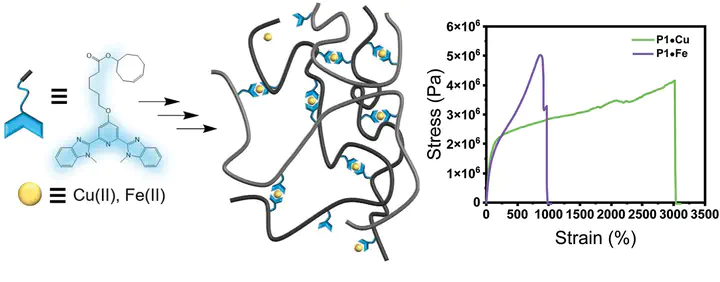Metal Identity Effects in the Fracture Behavior of Coordinatively Crosslinked Elastomers

Abstract
Polymers comprising polybutadiene backbones with 2,6-bis(1′-methyl-benzimidazolyl)pyridine (MeBip) sidechains were crosslinked by complexation with two different metal salts, either with copper(II) trifluoromethanosulfonate or with iron(II) trifluoromethanosulfonate. Dynamic mechanical analysis (DMA) and small-angle X-ray scattering (SAXS) data indicate that the crosslinking density and topology of the two materials are the same. The material crosslinked with copper ions, however, exhibits a higher extensibility and fracture energy than the polymer crosslinked with iron. These differences are attributed to differing mechanochemical responses of the metal complexes to applied stress. Computational results further indicate that the copper complexes are more labile, both in the stress-free state as well as upon application of force, and that the “open” complex in which only one MeBip ligand coordinates copper binds fewer counter-ions than the iron-coordinated analog. Both these factors enable easier re-binding of a second MeBip ligand. The computations further suggest that mechanochemically coupled spin-crossover behavior must be considered to fully understand the response of these metal-ligand complexes to mechanical stimuli. The data presented here furthers the facile manipulation of a material’s strain response via metal species modulation, and the results offer a way to understand the relationship between bulk and molecular strain response.